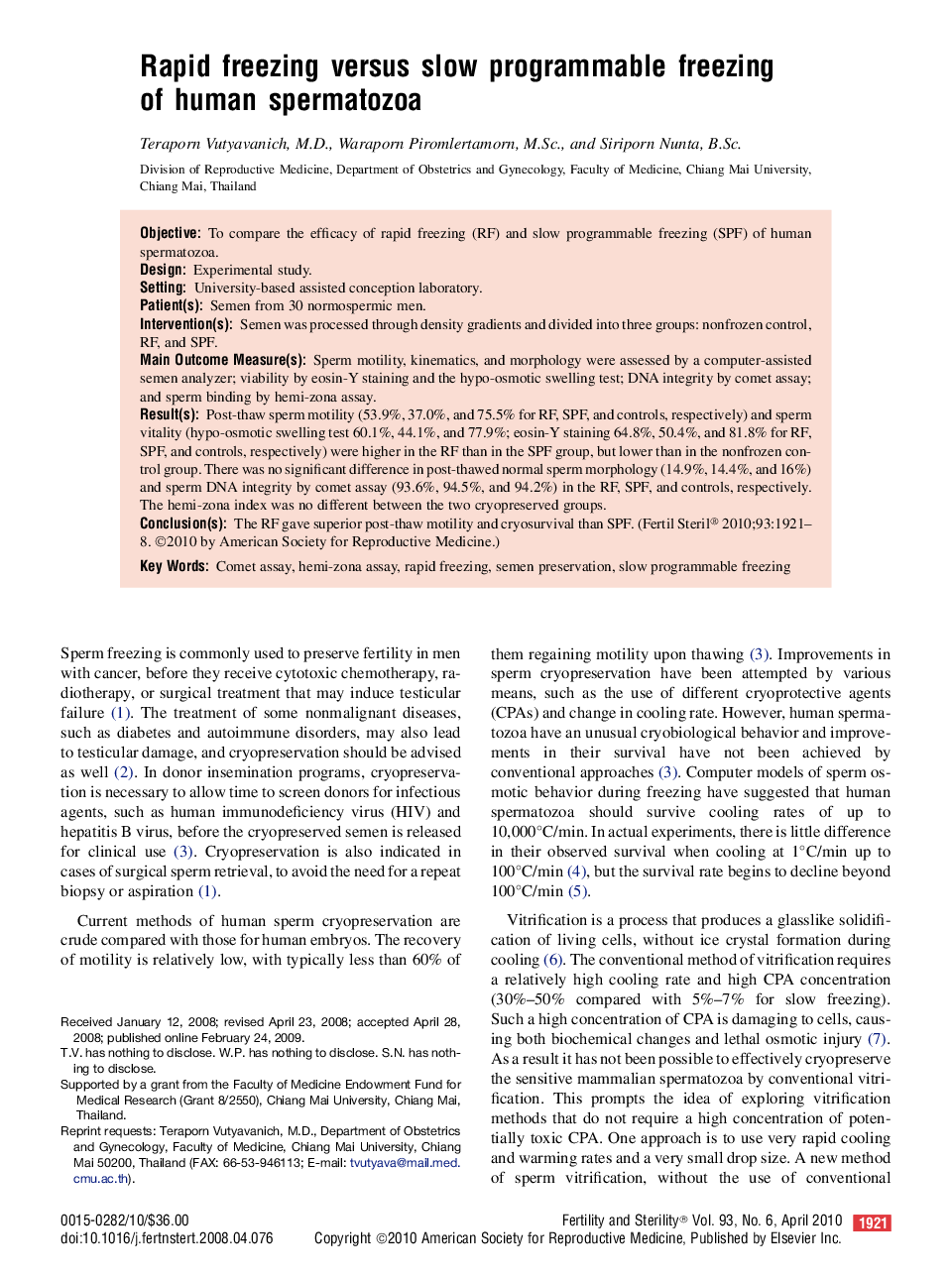| Article ID | Journal | Published Year | Pages | File Type |
|---|---|---|---|---|
| 3940837 | Fertility and Sterility | 2010 | 8 Pages |
ObjectiveTo compare the efficacy of rapid freezing (RF) and slow programmable freezing (SPF) of human spermatozoa.DesignExperimental study.SettingUniversity-based assisted conception laboratory.Patient(s)Semen from 30 normospermic men.Intervention(s)Semen was processed through density gradients and divided into three groups: nonfrozen control, RF, and SPF.Main Outcome Measure(s)Sperm motility, kinematics, and morphology were assessed by a computer-assisted semen analyzer; viability by eosin-Y staining and the hypo-osmotic swelling test; DNA integrity by comet assay; and sperm binding by hemi-zona assay.Result(s)Post-thaw sperm motility (53.9%, 37.0%, and 75.5% for RF, SPF, and controls, respectively) and sperm vitality (hypo-osmotic swelling test 60.1%, 44.1%, and 77.9%; eosin-Y staining 64.8%, 50.4%, and 81.8% for RF, SPF, and controls, respectively) were higher in the RF than in the SPF group, but lower than in the nonfrozen control group. There was no significant difference in post-thawed normal sperm morphology (14.9%, 14.4%, and 16%) and sperm DNA integrity by comet assay (93.6%, 94.5%, and 94.2%) in the RF, SPF, and controls, respectively. The hemi-zona index was no different between the two cryopreserved groups.Conclusion(s)The RF gave superior post-thaw motility and cryosurvival than SPF.
